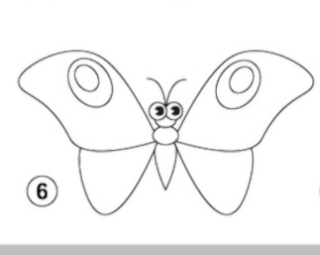Facts For Kids Drawing
Introducing
Drawing
represents a medium of art. An artist puts lines on paper or another surface to
create a painting. By learning to draw, most artists start out. This is because
the starting point for painting, sculpture, and other types of art is drawing.
Drawing
Tools
For Easy Drawing for Kids, artists can choose from several
resources. Popular drawing tools are pencils, pens, and pastels. Artists'
pencils are available in a wide variety of harnesses. Softer pencils can create
darker lines. The pens of artists may have distinct tips for creating large or
thin lines. Until drawing, some artists use special pens which they dip in ink.
Chalklike sticks consisting of colored paint are pastels. Other instruments for
drawing include charcoal, crayons, and chalk.
For drawing, paper is by far the most popular
surface. In several colors and textures, paper comes in. For fine painting,
artists also use smooth paper.
In order to make drawing for kids, many artists today use computers.
Special software enables artists to draw with a drawing pad or a mouse.
How Artists Draw
Normally, sketches are made up of lines. To shape figures, or
pictures of objects, an artist may bring lines together. Lines may also be used
by artists to depict the boundaries between a figure and the space around it.
An artist can blend or cross lines to create
shadows. An artist draws short, parallel lines to render light and dark areas
in a technique called hatching. An artist uses two sets of parallel lines that
cross between each other in a technique called crosshatching.
With just lines, not all sketches are made. By rubbing their
drawing tools over the drawing surface, artists also fill in sections of their
drawings. This approach produces shadows or solid color regions. To fill in
areas or to create shapes, some artists use spots and dots.
History
Since prehistoric times, people have been drawing. It was on
cave walls, on rocks, and possibly on sand that prehistoric people drew. Early
sketches evolved into writing eventually. Ancient Egyptian writing was a system
of image symbols, called hieroglyphics. Many of the characters in Chinese
literature were originally sketches, too.
As early as 3,000 years ago, Chinese artists made ink sketches.
The Chinese drew scrolls, or large, rolled pieces of paper or silk, around
1,000 years ago. Asian artists usually use brushes to make ink sketches instead
of pens.
In the Renaissance, drawing in Europe became a form
of fine art. An era of great culture was the Renaissance, which lasted from the
1300s through the 1500s.Many fine drawings have been made by artists in Italy,
including Leonardo da Vinci, Raphael, and Michelangelo. As well as scientific
drawings, Da Vinci made drawings of the human body. Detailed pen-and-ink
sketches of religious subjects were made in Germany by the artist Albrecht
Durer.
Later, European artists created sketches that illustrated their
views. The English artist William Hogarth created drawings in the 1700s that
made fun of human errors. The Spanish artist Francisco Goya made sketches in the
1800s that illustrated the horrors of war.
A lot of artists made sketches in the 1900s that looked less
realistic than previous drawings. To represent humans and objects, they used
geometric forms or free-flowing lines. Some artists created abstract sketches,
or sketches that did not depict anything. These sketches were supposed to
communicate feelings or concepts. Some of the greatest drawings of this time
were done by the Spanish artist Pablo Picasso.
Easy Drawing for Kids is still a common form of art today. But for many business
and entertainment reasons, people still use drawing. To sell goods, advertisers
use illustrations. In order to prepare their jobs, fashion artists and
designers of goods use sketches. For books, newspapers, and magazines,
illustrators and cartoonists draw images. Furthermore, many kids and adults
draw only for fun or relaxation.
Materials
The
medium is the means by which the drawing surface is supplied with ink, pigment,
or paint. Most drawing media are either dry (e.g. graphite, charcoal, pastels,
Conte, silverpoint), or a solvent or carrier fluid is used (marker, pen and
ink). Like ordinary pencils, watercolor pencils may be used dry, and moistened
to get different painterly results with a wet brush. In extremely rare cases,
artists draw with invisible (usually decoded) ink. Normally, metal point
drawing uses one of two metals: silver or lead. Gold, silver, copper, brass,
bronze, and tin dots are more seldom seen.
Paper comes in a range of sizes and qualities,
ranging from newspaper grade to high-quality paper offered as individual sheets
and relatively costly paper. Papers can vary when wet in texture, hue, acidity,
and intensity. Smooth paper is ideal for making fine detail, but the drawing
material is best kept by a "toothier" paper. A coarser material is
therefore useful for deeper contrast production.
For practice and rough drawings, newsprint and
typing paper may be helpful. Tracing paper is used to play with and move a
concept from one sheet to another over a half-finished drawing.
The basic kind of drawing paper sold in pads is
cartridge paper. For drawing fine detail, Bristol boards and even heavier
acid-free boards, often with smooth finishes, are used and do not distort when
applying wet media (inks, washes). For very fine detail, Vellum is extremely
smooth and fitting. Due to its texture, cold pressed watercolor paper may be
preferred for ink drawing.
Archival
quality paper, acid-free, retains its color and texture much longer than paper
based on wood pulp such as newsprint, which turns yellow and becomes brittle
much sooner.
A
drawing board or table, pencil sharpener and eraser, and for ink drawing,
blotting paper are the fundamental tools. The circle compass, ruler, and set
square are more methods used. The fixative is used to avoid the smudging of
pencil and crayon marks.
Source: The Soft Roots



Comments
Post a Comment